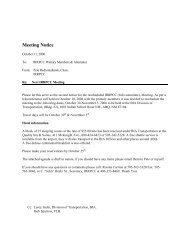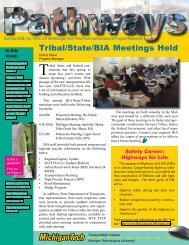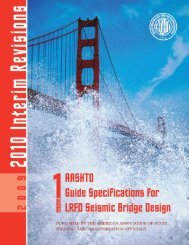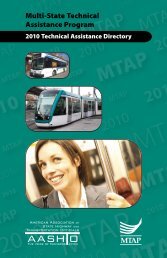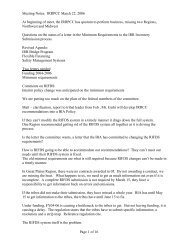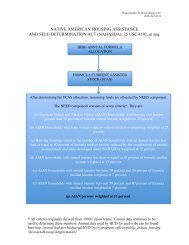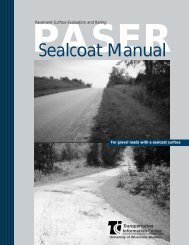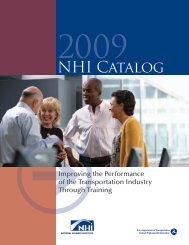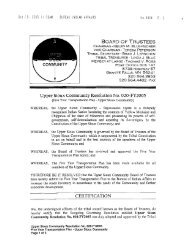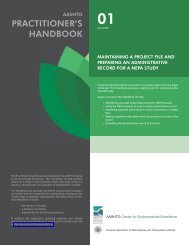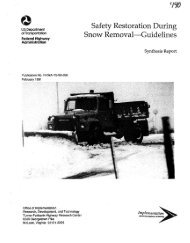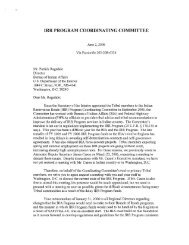Safety in Welding, Cutting, and Allied Processes
Safety in Welding, Cutting, and Allied Processes
Safety in Welding, Cutting, and Allied Processes
You also want an ePaper? Increase the reach of your titles
YUMPU automatically turns print PDFs into web optimized ePapers that Google loves.
ANSI Z49.1:1999<br />
5.2 Breath<strong>in</strong>g Zone Sampl<strong>in</strong>g. Where concentrations of<br />
airborne fume contam<strong>in</strong>ants are to be determ<strong>in</strong>ed by sampl<strong>in</strong>g<br />
of the atmosphere, sampl<strong>in</strong>g shall be <strong>in</strong> accordance<br />
with ANSI/AWS F1.1, Method for Sampl<strong>in</strong>g Airborne<br />
Particulates Generated by Weld<strong>in</strong>g <strong>and</strong> <strong>Allied</strong> <strong>Processes</strong>.<br />
When a helmet is worn, the samples shall be collected<br />
<strong>in</strong>side the helmet <strong>in</strong> the welders breath<strong>in</strong>g zone.<br />
5.3 Avoid the Fume. Welders <strong>and</strong> cutters shall take precautions<br />
to avoid breath<strong>in</strong>g the fume directly.<br />
5.4 Types of Ventilation. If natural ventilation is not sufficient<br />
to ma<strong>in</strong>ta<strong>in</strong> contam<strong>in</strong>ants below the allowable limits<br />
referenced <strong>in</strong> 5.1, mechanical ventilation or respirators<br />
shall be provided.<br />
In cases where the values for allowable exposure limits<br />
vary among recognized authorities, the lower values should<br />
be used to effect the maximum personnel protection.<br />
Fumes <strong>and</strong> gases from weld<strong>in</strong>g <strong>and</strong> cutt<strong>in</strong>g cannot be<br />
classified simply. The composition <strong>and</strong> quantity of fumes<br />
<strong>and</strong> gases are dependent upon the metal be<strong>in</strong>g worked,<br />
the process <strong>and</strong> consumables be<strong>in</strong>g used, coat<strong>in</strong>gs on the<br />
work such as pa<strong>in</strong>t, galvaniz<strong>in</strong>g, or plat<strong>in</strong>g, contam<strong>in</strong>ants<br />
<strong>in</strong> the atmosphere such as halogenated hydrocarbon vapors<br />
from clean<strong>in</strong>g <strong>and</strong> degreas<strong>in</strong>g activities, as well as the factors<br />
itemized <strong>in</strong> this section for adequate ventilation.<br />
In weld<strong>in</strong>g <strong>and</strong> cutt<strong>in</strong>g, the composition of the fumes is<br />
usually different from the composition of the electrode or<br />
consumables.<br />
Reasonably expected fume products of normal operation<br />
<strong>in</strong>clude those orig<strong>in</strong>at<strong>in</strong>g from consumables, base<br />
metals <strong>and</strong> coat<strong>in</strong>g, <strong>and</strong> the atmospheric contam<strong>in</strong>ants noted.<br />
Reasonably expected gaseous products <strong>in</strong>clude carbon<br />
monoxide, carbon dioxide, fluorides, nitrogen oxides, <strong>and</strong><br />
ozone.<br />
The recommended way to determ<strong>in</strong>e adequate ventilation<br />
is to sample for the composition <strong>and</strong> quantity of<br />
fumes <strong>and</strong> gases to which personnel are exposed (see 5.2).<br />
The Occupational <strong>Safety</strong> <strong>and</strong> Health Adm<strong>in</strong>istration<br />
(OSHA) or others may be the authority hav<strong>in</strong>g jurisdiction.<br />
Although not an authority hav<strong>in</strong>g jurisdiction, many of<br />
these levels are adopted from the publications of the American<br />
Conference of Governmental Industrial Hygienists<br />
(ACGIH). Refer to E4.1.3, Protective Screens, <strong>and</strong> Section<br />
7, Conf<strong>in</strong>ed Spaces.<br />
E5.3 Avoid<strong>in</strong>g the fume can be done by position<strong>in</strong>g of the<br />
work, the head, or by ventilation which captures or directs<br />
the fume away from the face. Tests have shown that fume<br />
control is more effective when the air flow is directed<br />
across the face of the welder, rather than from beh<strong>in</strong>d. Most<br />
of the fume appears as a clearly visible plume which rises<br />
directly from the spot of weld<strong>in</strong>g or cutt<strong>in</strong>g.<br />
E5.4 Natural ventilation is acceptable for weld<strong>in</strong>g, cutt<strong>in</strong>g,<br />
<strong>and</strong> related processes where the necessary precautions<br />
are taken to keep the welders breath<strong>in</strong>g zone away<br />
from the fumes <strong>and</strong> where sampl<strong>in</strong>g of the atmosphere<br />
shows that concentration of contam<strong>in</strong>ants are below the<br />
allowable limits referenced <strong>in</strong> 5.1.<br />
Mechanical ventilation <strong>in</strong>cludes local exhaust, local<br />
forced air, <strong>and</strong> general area mechanical air movement.<br />
Local exhaust ventilation is preferred.<br />
11



